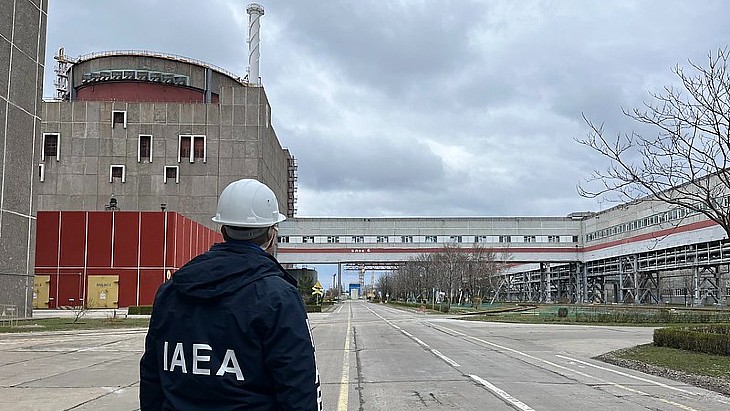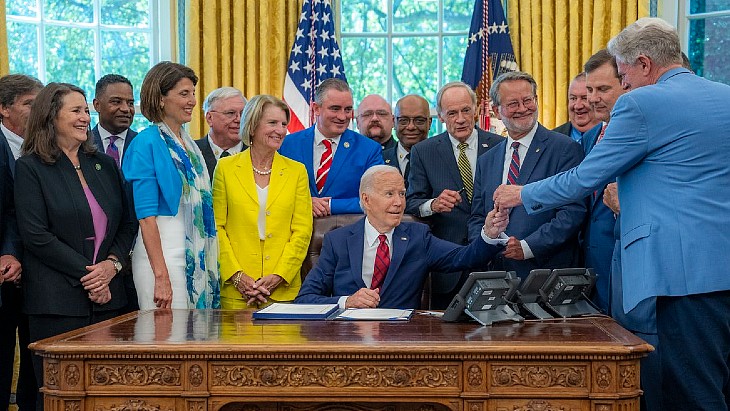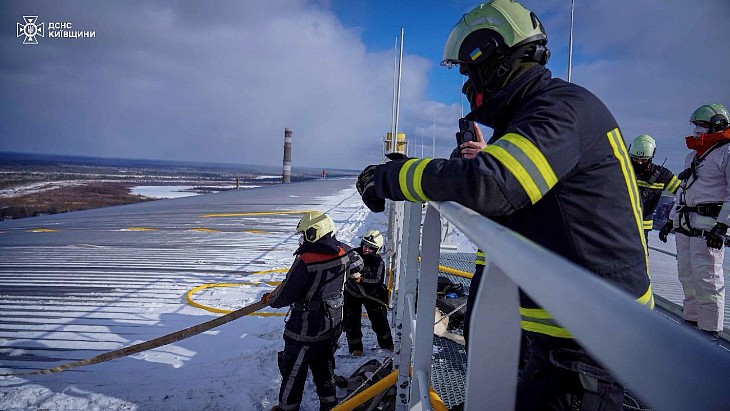IAEA stresses importance of maintenance at Zaporizhzhia

In the most recent update at the situation at Ukraine's six unit Zaporizhzhia nuclear power plant (ZNPP), which has been under Russian military control since early March 2022, the IAEA said that its team at the site had discussed maintenance activities with those running it and were shown the high-level maintenance plan for such work: "The ZNPP informed the IAEA team that the priority is to perform maintenance on the site's safety systems as well as important activities not conducted last year. The annual maintenance plan includes the safety systems, diesel generators, unit transformers and the 750 kV electrical switchyard."
It added: "The IAEA team did not receive a copy of the maintenance plan for a detailed review. However, based on discussions and information provided to the team, the IAEA concludes that the ZNPP will not be implementing a comprehensive maintenance plan during 2024."
Director General Rafael Mariano Grossi said: "A well-established maintenance plan and its timely implementation are essential to ensure plant safety and security. This maintenance needs to be performed to ensure nuclear safety, especially in the current situation where the six reactors have been shut down for an extended period. It is important that the IAEA has a thorough understanding of the maintenance plans to be able to fully assess nuclear safety at the ZNPP. We will continue to monitor the maintenance situation closely."
Another issue highlighted was the return of mines in a buffer zone between the internal and external fences of the plant. The mines, in an area inaccessible to ZNPP staff, had been removed in November, and Grossi said that their presence now was "inconsistent with the IAEA safety standards".
The State Nuclear Regulatory Inspectorate of Ukraine (SNRIU) said the mines were a further sign of militarisation of the site and the lack of a comprehensive maintenance plan for 2024 would increase safety risks - it said the way to remove such risks was to demilitarise the site and return it to being operated by Ukraine's Energoatom, under the regulatory supervision of SNRIU.
According to the Tass news agency, Russian Permanent Representative to international organisations in Vienna, Mikhail Ulyanov, responded to the IAEA concerns about mines at the site by saying: "There is nothing extraordinary about the presence of landmines. It is a common measure of protection of the station from attacks and sabotage. The landmines are located between the outer and inner fences of the power plant. It is a restricted buffer zone. Power plant staff do not go there. The landmines pose a threat only for rats, crows and potential saboteurs."
He added that in accordance with the Convention on the Physical Protection of Nuclear Material, the power plant administration is entitled to decide on protective measures on its own. "These landmines were removed in November. Now, they appeared again. Meaning - there is a need for that," he was reported as saying.
In its round-up the IAEA also said that its teams at Ukraine's three operating nuclear power plants and Chernobyl "continued to report that nuclear safety and security is maintained despite multiple air raid alarms... with the teams at Khmelnitsky and Rivne NPPs required to take shelter on several occasions".



_49215.jpg)





_66488.jpg)


